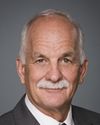Thank you very much, Mr. Chair.
Members, as you know, I'm always pleased to appear before this committee, and I'm happy to have the opportunity to speak to Building Resilience Against Terrorism: Canada's Counter-Terrorism Strategy.
As you've indicated, I'm joined here by two officials who will have much of the detail, should I not be familiar with certain very technical aspects of any questions that may be put.
Mr. Chair, Canada has been unwavering in its commitment to protect Canadians and to support global efforts to counter terrorism. I've said on many occasions that the most fundamental job of any government is to provide for the safety and the security of its citizens. Canada's counter-terrorism strategy underscores just how fundamental this responsibility is and how seriously our government takes it. I'm proud that this strategy sets out a clear approach for addressing terrorism, with a special focus on building community resilience. It also confirms that our government will take all reasonable measures to address real and persistent threats, and Canadians expect no less.
I imagine that most committee members are aware of the strategy, which was released earlier this year and is available to all Canadians through the Public Safety website. As such, I will only briefly go through the strategy itself and then will take some time to highlight its key areas of focus and the way forward.
The counter-terrorism strategy will help prioritize the government's counter-terrorism efforts and promote an open discussion with Canadians on the threats we face. It also highlights the importance of cooperation with Canada's international partners, all levels of government, security intelligence and law enforcement agencies, industry stakeholders, and special interest groups. In other words, it sets out how the government as a whole is currently working to prevent, detect, deny, and respond to the threat of terrorism.
First and foremost, the strategy focuses on prevention, because preventing terrorist ideologies from taking hold of vulnerable individuals is the best scenario.
The second element is to detect terrorism by identifying terrorists and their supporters and the capabilities and nature of their plans. The timely identification of terrorist threats is critical to preventing terrorist attacks, and that is why we have committed in the Air India inquiry action plan to working with our security intelligence and law enforcement agencies to identify more effective ways to share information.
The third element of the strategy is to deny terrorists the means and opportunities to pursue their illegal activities by mitigating vulnerabilities and intervening in terrorist planning, thereby making Canada and Canadian interests a more difficult target for would-be terrorists. To that end, this government has introduced amendments to the Criminal Code that would assist law enforcement in investigating terrorism offences by reinstating investigative hearings and recognizance with conditions.
To deny terrorists the ability to threaten Canada or our allies, we are also introducing new provisions that would make it a criminal offence to leave Canada or attempt to leave Canada for the purpose of committing a terrorist offence. To complement these measures, we are also responding to the needs of victims of terrorism through legislation that allows them to sue perpetrators and supporters of terrorism.
A final element is to respond to terrorist attacks in a proportionate, rapid, and organized manner to ensure a quick return to ordinary life and to reduce the impact and severity of terrorist activity.
Underpinning these four elements are two important themes: resilience and partnerships. I would like to touch on these two themes in turn, beginning with resilience.
In the context of Canada's counter-terrorism efforts, resilience is an important concept to understand for several reasons. First, it speaks to the power of individuals, communities, and society to reject and challenge the factors that pull thought and action in the direction of violent extremism. Secondly, resilience is key to minimizing the negative psycho-social effects of a terrorist attack. In other words, it is important that society's reaction to an event not exacerbate the crisis. Finally, it speaks to the ability of individuals and communities to draw strength from the principles that bind our society.
In making the concept of resilience a cornerstone of Canada's counter-terrorism strategy, one of our overarching goals is to mitigate the potential polarizing impact that violent extremist ideologies, or indeed terrorist attacks, can have on Canadian society.
The other key theme is that of building and strengthening our partnerships both domestically and internationally. The success of our overall strategy depends on strong partnerships, which is why it calls on local governments, community leaders, academics, and citizens to be part of the national effort.
To this end, we are actively working with our security intelligence agencies and law enforcement partners in the provinces and territories, the private sector, non-government organizations, civil society, and community organizations. The RCMP-led integrated national security enforcement teams based in major cities across Canada are one example of how federal, provincial, and municipal law enforcement partners and security intelligence agencies work in collaboration to investigate criminal threats to our national security.
At the local level, we also continue to reach out to a range of diverse communities through initiatives such as the Cross-Cultural Roundtable on Security, led jointly by Public Safety and the Department of Justice. Through this initiative we can engage communities in frank discussions that help to build trust and work towards a common vision for society that is resilient to terrorism in all of its forms. In fact, I will be meeting with community leaders in southern Ontario in just a few days to have a dialogue about a range of national security issues.
Mr. Chair, I think it's important to note that Canada's various counter-terrorism initiatives and activities have existed for some time. What this strategy does for the first time is set out in a coherent and unified format how these activities contribute to the government's strategy for countering terrorism. It brings together all the elements of the current approach in a way that can promote deeper engagement with Canadians. Our goal in sharing information about terrorist threats is not to instill fear in Canadians, but rather to build awareness. We recognize that there is still much to learn about countering and preventing terrorism in the Canadian context. More than ever, it is important for governments to collaborate and share information with experts in other fields, from other nations, and from the private and academic sectors.
To this end, as committee members may know, the Prime Minister and I launched the five-year, $10-million Kanishka project last year to fund Canadian research on all aspects of countering and preventing terrorism. The goal of the project is to create a vibrant network of scholars across the country that will inform more effective policies for countering terrorism.
Research topics for the first round of funding will cover themes such as ideological extremism and violence, perception and emotion, collective dynamics and resilience, and organizational effectiveness. With investments like these, it is inevitable that our collective knowledge will be advanced and that our understanding of how to tackle these issues will evolve. I had the pleasure of announcing the first round of funding, worth $1.1 million, which helped build Canada's knowledge and understanding of this complex issue.
Mr. Chair, let me finish with a few words on implementing the counter-terrorism strategy, especially as it relates to the prevention elements.
Our prevention elements will initially be focused upon the following areas: advancing our understanding of how and why violent extremist ideologies resonate with particular individuals, working to understand what tools can help communities deal with these issues, harnessing existing programming and partnerships to help contribute to prevention objectives, and developing reliable indicators to measure outcomes and evaluate the effectiveness of our programs.
As I said earlier, our government believes we can build a society that is resilient against terrorism in all of its forms by talking to Canadians about the security threats we face as a country and by collaborating with our partners to build knowledge and capacity. The counter-terrorism strategy underscores Canada's commitment to taking all reasonable measures to address terrorism in its many forms.
On that note, Mr. Chair, I would like to conclude by thanking all of you again for your time. I look forward to answering any questions that members of the committee may have.













